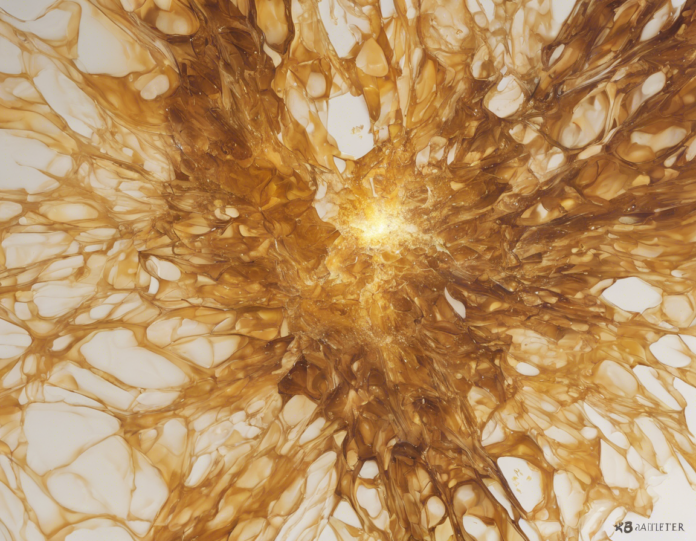When it comes to the spellcasting abilities of a character in a Dungeons & Dragons 5th edition (5E) game, the Shatter spell is a powerful and versatile choice that can turn the tide of battle in an instant. In this comprehensive guide, we will delve into the intricacies of Shatter, exploring its mechanics, applications, strategies, and more. Whether you are a seasoned player looking to optimize your spell usage or a newcomer eager to learn the ropes, this guide will equip you with the knowledge needed to master the Shatter spell in your 5E adventures.
Understanding the Shatter Spell
What is Shatter?
Shatter is a 2nd-level evocation spell that allows a caster to create a loud, jarring noise that can break brittle, nonmagical objects and potentially cause damage to creatures in the area of effect. When cast, a sudden loud ringing noise erupts from a point of the caster’s choice within range, causing havoc and destruction.
Mechanics of Shatter
The Shatter spell has a range of 60 feet and a 10-foot radius sphere area of effect. It requires a Constitution saving throw from any creature within the range to resist the spell’s effects. On a failed save, the targets take 3d8 thunder damage, or half as much on a successful save. Additionally, the spell can also destroy nonmagical objects or structures made of crystal, glass, ceramic, or similar materials that are not being worn or carried.
Components and Casting
To cast Shatter, a character needs Verbal and Somatic components. The spell’s casting time is one action, making it a quick and effective choice for combat situations where swift action is necessary.
Strategic Applications of Shatter
Combat Use
In combat scenarios, Shatter can be a potent offensive tool to deal damage to groups of enemies clustered together. Its area of effect makes it ideal for targeting tightly packed foes, potentially hitting multiple enemies at once and maximizing damage output. Additionally, the spell’s thunder damage is less commonly resisted compared to other damage types, making it a reliable choice against a variety of creatures.
Utility Purposes
Beyond its combat applications, Shatter can also be used creatively in non-combat situations. The spell’s ability to shatter nonmagical objects can come in handy for breaking through barriers, collapsing structures, or creating distractions. Whether you need to access a locked room, clear a path through obstacles, or cause a diversion to cover your party’s escape, Shatter can be a versatile solution.
Enhancing Shatter with Class Features and Feats
Elemental Affinity (Sorcerer)
Sorcerers with the Draconic Bloodline can benefit from the Elemental Affinity feature, which allows them to add their Charisma modifier to the damage dealt by a spell of the chosen elemental type. By selecting Thunder as the elemental type for Shatter, a Sorcerer can boost the spell’s damage output significantly, making it even more devastating to foes caught in its area of effect.
Empowered Evocation (Wizard)
For Wizards with the Evocation school, the Empowered Evocation feature grants a bonus to the damage dealt by the wizard’s evocation spells. By utilizing this feature with Shatter, a Wizard can ensure that the spell’s damage rolls are consistently high, making it a reliable source of damage throughout their adventures.
War Caster Feat
Players looking to enhance their concentration abilities when casting spells like Shatter can benefit from the War Caster feat. This feat grants advantages on concentration saving throws, allowing spellcasters to maintain their concentration on spells even when taking damage. Additionally, the feat enables spellcasters to perform somatic components for spells even when holding weapons or shields, making it easier to cast spells in combat situations.
Effective Strategies for Using Shatter
Targeting Clusters
When using Shatter in combat, prioritize targeting groups of enemies clustered closely together to maximize its effectiveness. By positioning the spell to hit multiple foes at once, you can efficiently deal damage and potentially weaken or eliminate multiple threats in a single cast. Coordination with your party members to funnel enemies into clustered positions can enhance the spell’s impact further.
Combining with Battlefield Control
Pairing Shatter with spells that control the battlefield can create devastating combos that swing the tide of battle in your favor. Spells like Web, Entangle, or Grease can restrict enemy movement, forcing them to remain within Shatter‘s area of effect and ensuring maximum damage potential. By synergizing different spells, you can create powerful combinations that dictate the flow of combat.
Environmental Interactions
Take advantage of the environment when casting Shatter to amplify its effects. Utilize the spell near walls, ceilings, or floors that are fragile or composed of brittle materials to create cascading destruction. Collapsing structures, shattered glass windows, or crumbling pillars can add flair to your spellcasting while enhancing its practical impact on the battlefield.
Frequently Asked Questions (FAQs)
1. Can Shatter target creatures behind cover or walls?
Shatter can affect creatures behind cover or walls if they are within the spell’s area of effect. However, the spell’s description specifies that it can only affect nonmagical objects, so its impact on creatures hiding behind obstacles may vary based on the DM’s interpretation.
2. Does Shatter deal extra damage to objects in its area of effect?
Yes, Shatter inflicts full damage to nonmagical objects within its area of effect, potentially destroying them outright depending on their composition. Objects such as crystal vases, glass windows, or ceramic tiles are especially vulnerable to the spell’s effects.
3. Can Shatter be countered by deafening effects or resistance to thunder damage?
Creatures that are immune to thunder damage or that cannot hear the spell’s noise are unaffected by Shatter. Deafening effects or spells like Silence can nullify the spell’s impact on creatures that rely on sound-based perception.
4. How does Shatter interact with creatures that have Tremorsense or other forms of vibration detection?
Shatter‘s noise-based effect can still affect creatures with Tremorsense or similar abilities that detect vibrations, as the spell generates a powerful shockwave that disrupts the environment. In such cases, the spell’s damage is determined by the creature’s Constitution saving throw.
5. Can Shatter be cast silently through Subtle Spell or similar features?
With features like the Sorcerer‘s Subtle Spell, a character can cast Shatter without verbal components, eliminating the noise associated with its casting. However, the spell’s thunderous effect still occurs at the designated point, potentially alerting nearby creatures to the spell’s usage.
6. How does Shatter interact with fragile magic items or constructs?
While Shatter primarily affects nonmagical objects, its impact on fragile magic items or constructs may vary based on the DM’s discretion. Consult with your DM to determine the spell’s effects on specific magical objects or constructs within your game.
7. Can Shatter break through magical barriers or force fields?
As Shatter specifically targets nonmagical objects, it may not automatically destroy magical barriers or force fields. Consult with your DM to determine the spell’s effectiveness against specific magical defenses encountered in your adventures.
8. Can Shatter be used to trigger traps or set off explosive devices?
Shatter can be employed creatively to trigger traps or detonate explosive devices within its area of effect. By directing the spell towards potential hazards, you can remotely activate certain mechanisms or neutralize threats from a safe distance, showcasing the spell’s utility beyond combat applications.
9. How does Shatter interact with structures such as walls, doors, or ceilings?
When cast on structures like walls, doors, or ceilings, Shatter can weaken or collapse them depending on their composition and durability. Consult with your DM to determine the specific effects of the spell on environmental elements within your game world to create dynamic and immersive storytelling moments.
10. Can Shatter be combined with other spells for enhanced effects?
Players can experiment with combining Shatter with other spells to create synergistic effects that amplify their impact on the battlefield. Pairing Shatter with area control spells, debuffs, or crowd control abilities can yield powerful combinations that enhance your tactical options and contribute to dynamic gameplay experiences.
In conclusion, Shatter is a versatile and potent spell that can be a valuable asset to any spellcaster’s repertoire in a D&D 5E campaign. By understanding its mechanics, strategic applications, and enhancements through class features and feats, players can wield Shatter effectively in combat, utility scenarios, and creative problem-solving situations. With the tips, strategies, and FAQs provided in this guide, aspiring adventurers can harness the destructive power of Shatter to overcome challenges, outwit foes, and leave a resounding impact on their gaming experiences.
















